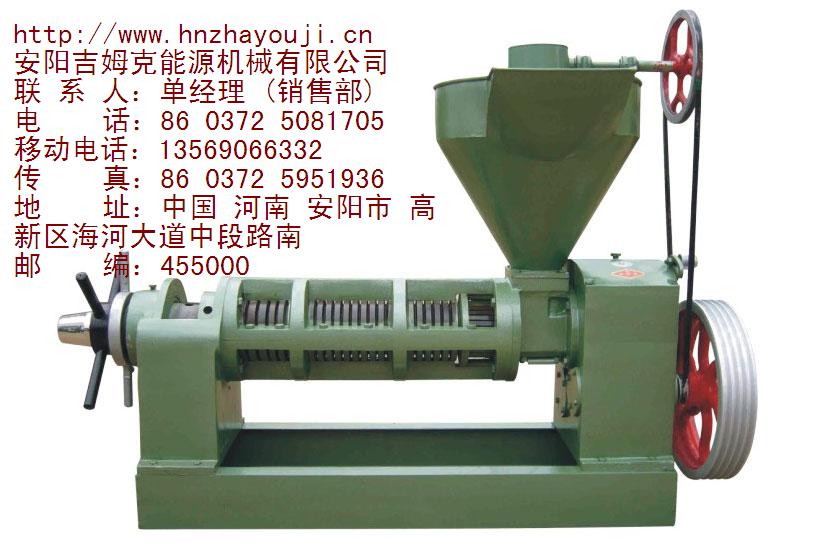Main factors affecting the oil yield of oil expellers
Moisture of oilseed:
The moisture of oilseed is the most critical factor that affects the oil yield. Too much or too little moisture in the oilseed will directly affect the oil yield. Most users don't have testing equipment, so the appropriate moisture levels for several main oilseeds can be determined by experience as follows:
(1). Soybean: If you can crush it with your front teeth and grind it into a flat sheet with your molars, with cracks and a slight sound, then the moisture level is appropriate. If it becomes a flat sheet but without cracks, then it's too wet; you can use fire drying or sun drying to deal with it. If it breaks with a loud sound, then it's too dry; in this case, an appropriate amount of water is needed.
(2). Cottonseed: If biting with your teeth separates the kernel from the shell, and the shell breaks with a sound, then it's appropriate; if it becomes flat, then it's too wet. If the kernel and shell turn to powder, then it's too dry.
(3). Rapeseed: There are two methods for pressing: cold pressing or hot pressing.
For cold pressing: If squeezing with your fingernail produces a sound, splits into two pieces, and oil comes out, then it's appropriate; if it turns to powder, then it's too dry; if it becomes flat, then it's too wet.
For hot pressing: It needs roasting. After roasting, check by rubbing the rapeseed between two wooden boards; if the shell separates from the kernel, then it's appropriate; if the kernel turns to powder, then it's too dry; if the shell doesn't separate from the kernel, then it's too wet.
2. The thickness of the cake reflects the size of the pressure in the pressing chamber; thick cakes indicate low pressure, thin cakes indicate high pressure. The general rule is similar to the tightness of the round排 (榨圈), that is, if the oilseed contains less oil, the pressure should be higher, the cake should be thinner, and the round排 (榨圈) should be tightened (using the tightening nut); if the oilseed contains more oil, then the pressure in the pressing chamber should be lower, the cake should be thicker, and the round排 (榨圈) should be looser.
The relatively suitable thickness of the cake is:
Soybean: The first pressing should be slightly thicker at about 1-1.5 millimeters; the second pressing should be about 0.5-1 millimeter thick.
Cottonseed: Only one pressing is needed, with the cake thickness around 1-2 millimeters.
Peanut kernel: Generally, cold pressing is done 2-3 times, with the cake thickness around 1-2 millimeters.
In the process of oil pressing, due to the differences in various factors, the thickness of the cake should be mastered according to the situation of the cake coming out; the most suitable cake thickness is when the oil flow is at its peak. The determined numerical values for the above cake thicknesses must not be rigidly applied; the thickness should be adjusted according to the actual situation of the cake coming out, and the most suitable cake thickness is when the oil flow is at its peak.
